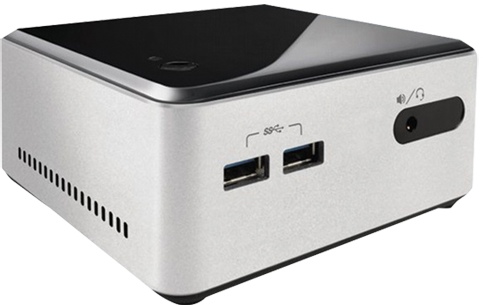
Intel doesn’t usually get involved in PC manufacturing. Components —especially the CPUs that power computers and mobile devices— are its bread and butter. But with the NUC (or Next Unit of Computing), Intel is going most of the way towards offering its own, intel-branded PC. I say most of the way because what you get out of an Intel NUC box isn’t a functioning PC, but a kit that provides much of what you need to build a capable computer in a tiny package. Lacking essentials like storage, RAM, Wi-Fi card and an operating system, the Intel NUC is about as barebones as retail PCs get, yet its elegant design and powerful CPU make for a very capable little mini PC —once you assemble the pieces you need and install them.
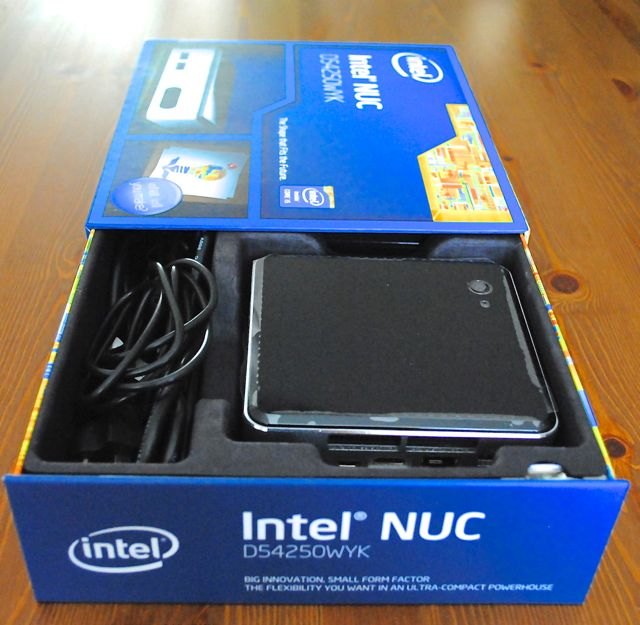 Intel NUC Unboxing
Intel NUC Unboxing
Compared to the average barebones PC, the Intel NUC arrives in an attractive and remarkably compact box. The entire thing is dwarfed by a phone book. Crack the box open and you’re greeted by the Intel chime —that’s right, those little sound chips they’ve been embedding in birthday cards have made the leap to PC packaging. Between the Intel blue box, the prominent Intel branding all over the packaging and the Intel chime, there’s no mistake that you’re not buying just any PC, you’re buying one made by Intel.
Inside, you find the tiny Intel NUC, a power brick and some instructions. That’s it. No keyboard, mouse or anything else. The NUC itself is an attractive chunk of metal and black plastic that’s little more than a handful.
Wait, the Box Chimes But No Windows Startup Sound?
Plug it in to a monitor, keyboard and mouse and you get… crickets. Nothing. That’s because the Intel NUC is sold as a kit, not a complete PC. When you buy other mini PCs, you can expect to plug them in and fire them up.
However, as a computer kit, the NUC is not only lacking peripherals that some PC manufacturers throw in for free (like a keyboard and mouse), you’ll need to supply crucial components like RAM, storage and a Wi-Fi card before you can do anything. There’s no Windows install disk included, either. Once you install the necessary components, you choose your operating system. You could buy a copy of Windows 8, or install something open-source like XBMC, Ubuntu or even Chromium OS.
The good news is that Intel has provided some solid basics, including a Core i5 CPU, HD graphics support, an integrated Wi-Fi antenna and plenty of ports. The case is also dead simple to open. All you need is a regular Philips screwdriver (no need for specialized PC tools) to remove four screws and you’re in.
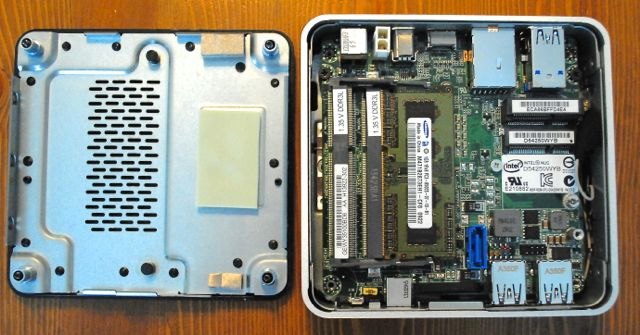
As you might expect from the barebones approach, installing an operating system isn’t quite so simple as inserting a CD. Fortunately, Intel provides online directions for installing Windows and Linux as well as updated BIOS file downloads. Essentially, you’ll need the components installed, plus installation disk images on a USB thumb drive (or an external USB optical drive), an Internet connection, a keyboard, mouse and monitor.
Once it’s up and running, you should find that Core i5 makes for a competent PC, although overall performance is going to be impacted by your choice of components —scrimp on RAM and you’ll see a hit if you try to open multiple applications, while a small or slow SSD has storage and file access implications.
Intel NUC Specs
The loaner that intel sent was the D54250WYK model with a Core i5 processor. If your needs are more modest, a less expensive version is also offered with a Core i3 CPU.
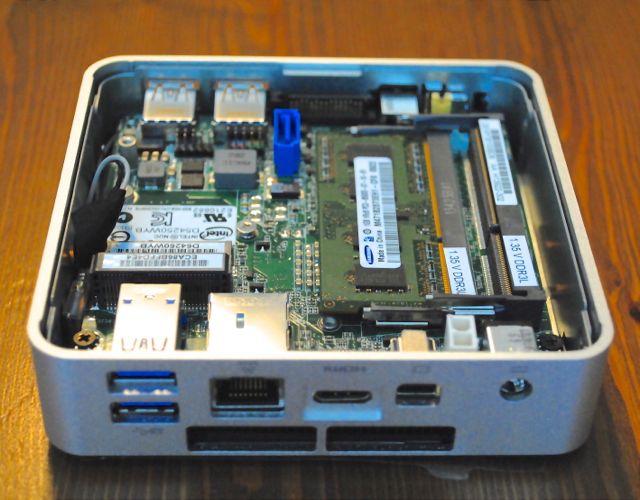 Dual-core, 4th generation (Haswell) Intel Core i5-425OU CPU @ 1.3GHz (Turbo-boost to 2.6GHz) with heat sink and fan
Dual-core, 4th generation (Haswell) Intel Core i5-425OU CPU @ 1.3GHz (Turbo-boost to 2.6GHz) with heat sink and fan- Intel HD 5000 integrated graphics, Intel HD Audio
- 2 SO-DIMM slots supporting up to 16GB 1600/1333 MHz 1.35V DDRL3 RAM
- 1 SATA port (internal header)
- 4 USB 3.0 ports (two front, two back)
- 1 Intel Pro 10/100/1000 ethernet port
- 1 mini DisplayPort, 1 mini HDMI port
- IR sensor on front panel
- Audio jack
- 1 full-length mini PCI Express slot with mSATA support
- 1 half-length mini PCI express slot
- Integrated wireless antenna
- VESA mounting bracket
- 65W power adapter
- 11.6 x 11.2 x 5.2 cm, 1.3 kg
Upgradeability
The NUC isn’t like a typical build-your-own PC in the sense that not all its components are upgradable. In terms of the pieces you supply, there are options for future improvement. For example, if you slotted in a spare 120GB SSD when you first assembled the NUC, you could always swap it out for a higher capacity model later. You can max out the RAM. But graphics capabilities and processor upgrades are out of the question because they’re soldered to the motherboard.
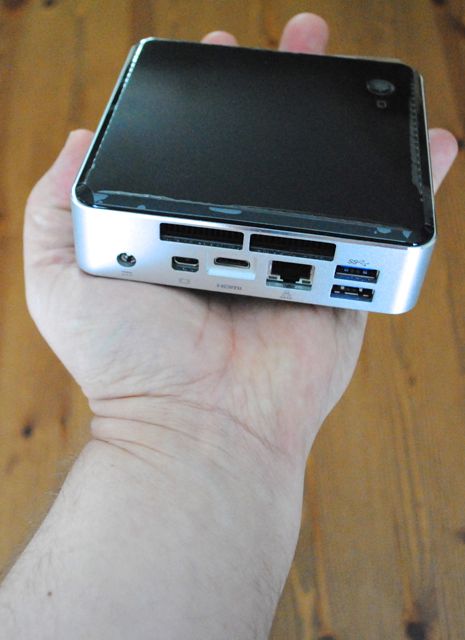 Who’s the Intel NUC For?
Who’s the Intel NUC For?
As a general purpose computer for business or home use, the small size, reasonable price and the ability to very easily access and upgrade RAM and storage —two of the components that tend to offer a real performance boost a few years into a typical PC’s lifespan— make the Intel NUC a real option.
Hobbyists who want to try their hand at putting together a PC kit, but aren’t ready to assemble the tools and components to tackle a complete build from scratch will find the Intel NUC kit makes for an introduction without a steep learning curve.
And any purpose where you need a reasonably capable PC, but don’t want to see it is where the Intel NUC shines. Home theatre systems and media servers are an ideal application —the dual core Intel Core i5 CPU combined with Intel HD 5000 graphics, HDMI output, Intel High Definition Audio and a built-in IR receiver make it a great rig for this purpose. Add in its tiny size and the VESA mounting capability that let you physically attach the NUC to the back of a TV or display so you can’t even see it, and it’s just about perfect for this purpose.
Just don’t expect to be using the Intel NUC as a gaming rig.

If you want to , you can’t expect to cram the performance you need inside a case measuring just over 11 cm square. Casual gaming, sure. But if you want high powered gaming performance in the smallest form factor possible, you’re probably better off looking at a gaming laptop instead.



